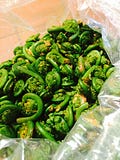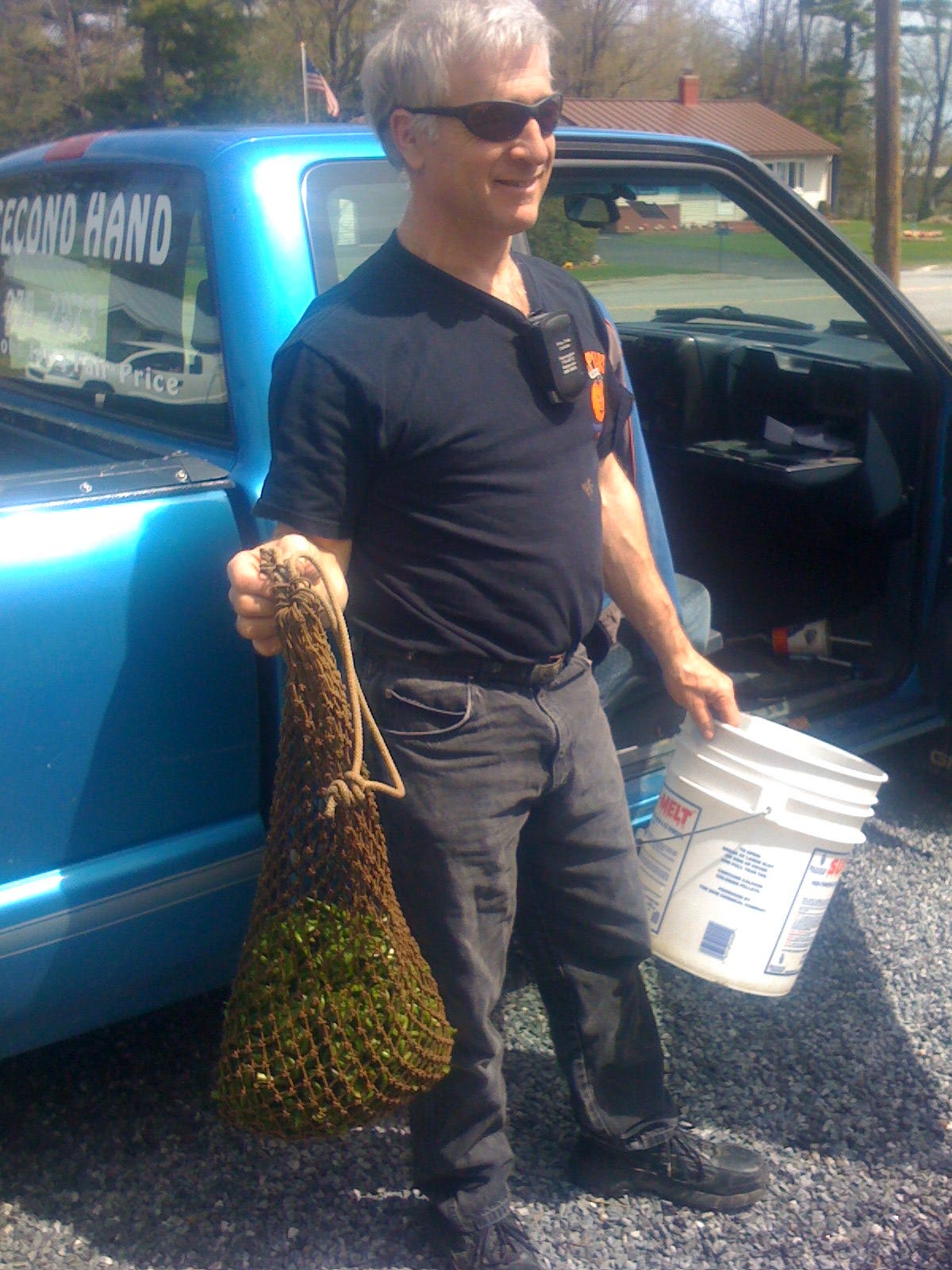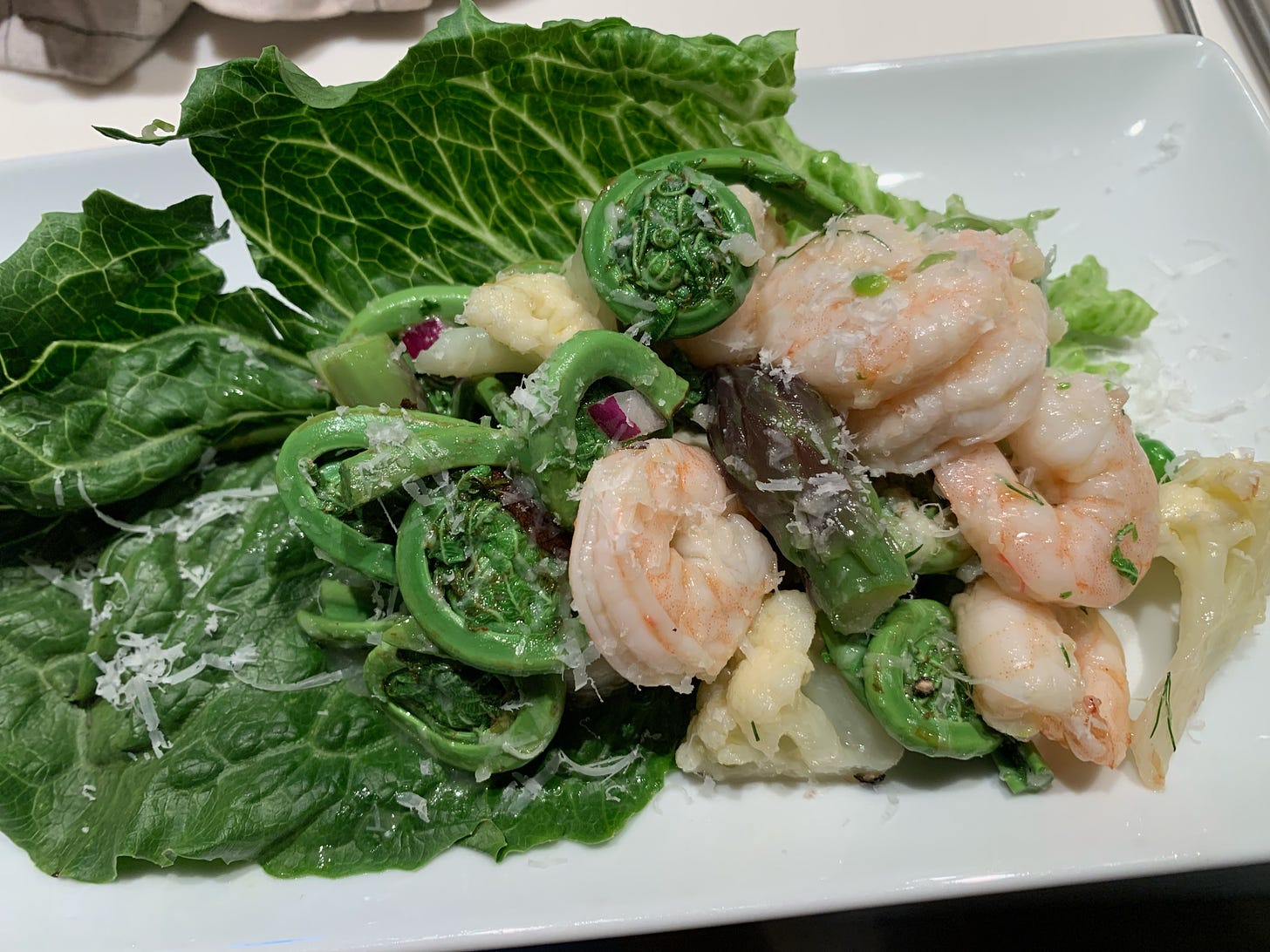Bites&Nibbles May 2023
FIDDLEHEADS
recipe, story + photography by BRENDA ATHANUS
It wouldn’t be spring in Maine without enjoying at least a couple batches of fiddleheads.
This hasn’t been a particularly hard winter, except maybe those high winds, minus 21 below zero couple of days in February. So far, the spring melt has been gentle and slow, but next week promises heavy rain because that’s what “brings mayflowers” … and fiddleheads! Since fiddleheads grow along the banks of waterways they routinely appear as the waters recede.
Interesting vegetable, non?
There are two varieties of ferns that are desirable to eat: The cinnamon fern, a smaller more compact variety that arrives first and the more prized, later-season, ostrich fern—which is larger and more elegant in flavor and appearance.
Fiddlehead ferns have a flavor unlike anything else. Their taste is somewhat like asparagus tips with the texture of okra. You will either like them immediately or you won’t … There is no middle ground or negotiation with this vegetable. Period.
Riverbanks attract crowds of fiddlehead foragers filling huge sacks, or old broken laundry baskets, with massive quantities of this spring delight. My sister and I call fiddleheads, “The Stolen Vegetable.” Fiddlehead thieves don’t gather their bounty from their own land; they usually sneak onto your land and swipe your fiddlehead crop while you patiently wait for them to reach perfect size.
Then, YOU get the honor of buying them.
There are two schools for preparation, which give very different results. It’s like preparing squid: you can cook them quickly, or cook them long and slow.
I can hear you … Which one do I personally prefer?
Having eaten fiddleheads since birth, there was never any of this ‘eating fiddleheads al dente’ nonsense. But, true confession, I really like the slow cook method with diced salt pork (before pancetta became, a thing), coarse-chopped onions, washed and cleaned fiddleheads, slow simmered for a short hour. Results? Pure heaven! No, they won’t get mushy. They’ll get sweeter and sweeter as they slowly cook.
Well, maybe a bit softer then you’d like but, for me, it’s as if I am 7 years old again.
Fiddleheads are harvested riverside with a knife as the fern frond is just breaking, i.e., popping up, its little head. A wispy brown sheath partially covers it, which must be removed before cooking, as it imparts a bitterness and turns the cooking water a tannic brown like over-steeped tea.
I FILL MY SINK WITH COLD WATER and agitate the ferns vigorously until all the wispy brown covers get waterlogged and fall away.
Next, I place them in a large pot, cover them with water and gradually bring them to a rolling boil for 2 to 3 minutes. When they turn a bright spring green, dump the first cooking water and refill with fresh water. You can finish cooking them anyway you’d like for another 7 or 8 minutes. Cooking twice will ensure a sweet, not bitter, fiddleheads. Use your imagination to finish preparing this long awaited, wild foraged, first vegetable of spring.
Serve the cooked and cooled fiddleheads as a cold salad with an assertive vinaigrette—shallots or garlic or caramelized onions, balsamic vinegar and a flavorful olive oil. Or as a side dish to a nice spring hard shell lobster, or make a creamy and dreamy risotto with coarsely chopped, pre-cooked fiddleheads and finish with either an aged gouda or smoked gouda mixed with Parmesan.
No matter how you cook them, they are well worth your time and effort. The harvest season lasts all 31 one days of May as pickers chase the crop from southern Maine to the Canadian border.
Then, magically, when the season ends, each plundering pirate instantly transforms into a wild mushroom pirate/forager and the fun begins again.
……………………………………………………..
Thank you all for joining us … Happy May from Whittaker, Bear, BillyB and me!
I miss Maine.




